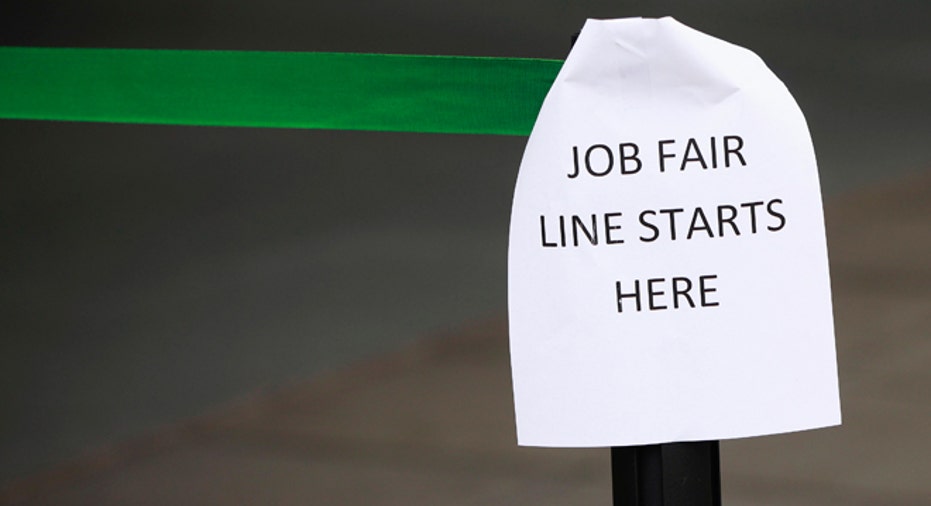Job Market Needs Broader Growth to Sustain Gains

The U.S. job market will need stronger growth from the broader economy to sustain gains made last month that drove the unemployment rate down to its lowest level in nearly four years.
That’s the assessment of economists who are taking a guarded approach to the September jobs report and its headline number – an unexpected drop in the unemployment rate to 7.8% from 8.1% in the prior month.
"There are big questions … as to whether this pace of job creation can persist, especially given mixed signals from the leading indicators about the trajectory of U.S. economic growth in the second half of the year,” said Chris Williamson, chief economist at research firm Markit.
Williamson pointed to a second quarter GDP of 1.3% (revised down from an earlier 1.7%), and indications that the third quarter could be “even weaker.” In addition, he said the U.S. manufacturing sector is likely to record its worst quarter in three years.
"The average payroll gain of 146,000 seen over the past three months is surprisingly strong given other economic data for the quarter,” Williamson added, citing factory orders and related data, “which have pointed to a growth slowdown.”
U.S. nonfarm payrolls increased 114,000 in September, according to the Labor Department statistics, narrowly beating the Thomson Reuters estimate of 113,000. However, economists say the economy needs to add 125,000 jobs a month just to keep up with population growth.
The presidential campaigns have taken predictable positions on Friday’s jobs data.
“While there is more work that remains to be done, today's employment report provides further evidence that the U.S. economy is continuing to heal from the wounds inflicted by the worst downturn since the Great Depression,” Alan Krueger, chairman of the White House Council of Economic Advisers, said in a statement.
President Obama, coming off a disappointing performance Wednesday in the first presidential election, touted the numbers at a campaign stop in Fairfax, Va.
Republican challenger Mitt Romney took the opposite view, casting the report in a negative light.
“This is not what a real recovery looks like,” Romney said in a statement. "We created fewer jobs in September than in August, and fewer jobs in August than in July, and we've lost over 600,000 manufacturing jobs since President Obama took office.”
Job Creation Central Issue of Presidential Election
Job creation and economic growth are by far the central issues of the upcoming Nov. 6 election.
Gus Faucher, senior economist at PNC Financial Services Group in Pittsburgh, pointed to numbers behind the headline unemployment rate as evidence of growing stability in the labor markets.
For instance, the Labor Department revised upward the August and July payroll numbers: August payrolls rose 142,000 not 96,000 as reported earlier, and the July number was 181,000 rather than 141,000. In addition, the work week rose to 34.5 hours from 34.4 and hourly earnings rose 0.3%, so personal incomes are rising.
“Is the drop (in the unemployment rate) overstating the improvement? Yes. But I think overall the numbers are good,” said Faucher.
Other economists, also adopting a measure of caution, said the Federal Reserve is unlikely to alter its latest stimulus plan in light of the September jobs data. The Fed last month introduced a new quantitative easing program that will see the central bank purchase $40 billion in mortgage backed securities in an effort to energize the long-dormant housing market.
The Fed believes a revised housing market will lift the broader economy by creating jobs in a variety of sectors impacted by housing such as construction, retail and financial services.
Analysts predicted Friday that the decline by 0.3 percentage points in the unemployment rate won’t alter the Fed’s long-term plans of QE III and historically low interest rates.
Michael Gapen, senior U.S. economist for Barclays Capital, wrote in a research note, “We do not see the sharp decline in the unemployment rate as changing the calculus for the Fed at this stage. The Fed desires both a substantial and sustainable improvement in labor market conditions and, despite the drop in the unemployment rate, the Fed is likely to read this as one data point.”